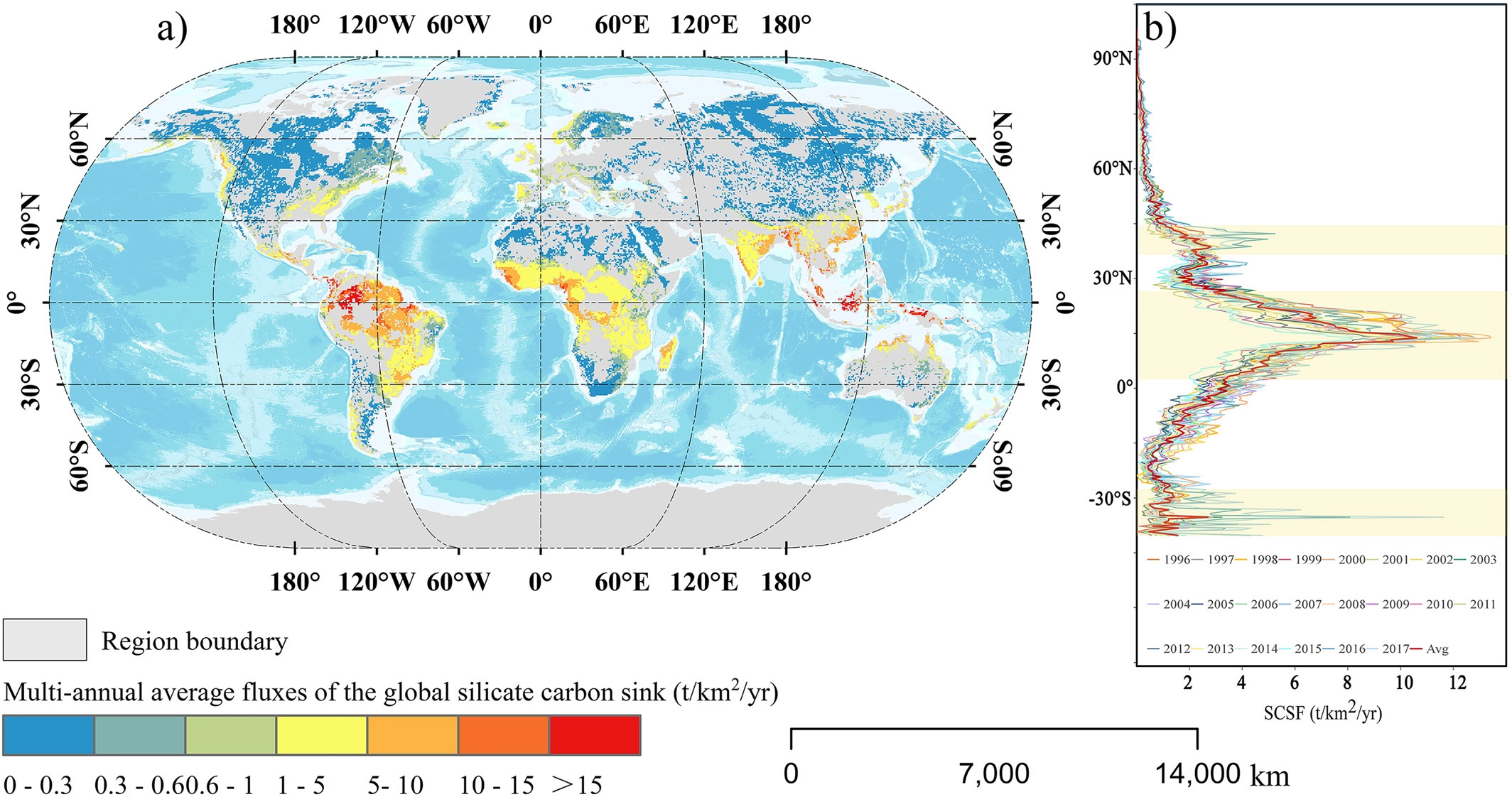Silicate carbon weathering sink (SCS) is the net carbon sink that affects the global carbon cycle over a period of millions of years or more. However, the magnitude, spatial pattern, and evolution characteristics of global SCS remain unclear.
A research team led by Prof. BAI Xiaoyong from the Institute of Geochemistry of the Chinese Academy of Sciences (IGCAS) has calculated the global silicate rock weathering carbon sink flux (SCSF) magnitude and spatio-temporal distribution for 1996-2017, and further predicted the SCSF under two future greenhouse gas emission scenarios.
The study was published in Earth's Future on April 20.
The results demonstrated that the area of silicate rocks in the world was 6165.25 × 104 km2, accounting for about 41.38% of the global land area. The SCS was estimated as 127.11 Tg/yr, and the SCSF of silicate rocks was 1.67 t/km2/yr.
"Global SCSF showed huge spatial heterogeneity, for example, 7% of the area of Brazilian silicate rocks contributes nearly a quarter of the global SCS," said Prof. BAI.
The SCSF varied considerably among different watersheds due to zonal influence. The top five basins with annual average SCSF were Sepik, Orinoco, Magdalena, Amazon, and Essequibo. Sepik is the main river in northwestern Papua New Guinea, whereas the other four basins are located in South America.
The researchers also found that the contributions of runoff and temperature to the changes in the SCSF were quite different. The contribution of runoff to the changes in the SCSF was mainly negative, while that of the temperature was mainly positive. However, the contribution area and magnitude of temperature were smaller than those of runoff.
"Although global SCS shows a downward trend, the future prediction (2041-2060) suggested an active response of SCS to the global warming trend and its carbon sink capacity was suggested to continue to rise," said Prof. BAI.
Moreover, under severe CO2 emissions, the global SCSF was predicted to increase by 23.8%, with the growth area concentrated in South America and Australia.
The study may fill up the large-scale data gap of SCSF and provide a scientific basis for quantitatively assessing the impact of climate change on SCS.
It was supported by the Strategic Priority Research Program of the Chinese Academy of Sciences, National Natural Science Foundation of China, Western Light Talent Program (Category A), and United fund of karst science research center.

Fig. Spatial distribution (a) and latitudinal variation (b) of average annual silicate rock weathering carbon sink flux during 1996–2017. (Image by IGCAS)
Contact:
BAI Xiaoyong
Institute of Geochemistry, Chinese Academy of Sciences
E-mail: baixiaoyong@mail.gyig.ac.cn
(By Professor BAI Xiaoyong's group)